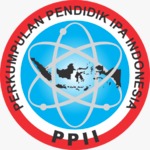Pharmacokinetic-Pharmacodynamic Study of Metformin Using Oral Glucose Tolerance Test for the Treatment of Type 2 Diabetes Mellitus
DOI:
https://doi.org/10.29408/kpj.v7i3.23953Keywords:
oral glucose tolerance test, pre-diabetes, simulation model, type 2 diabetes mellitusAbstract
In this study, a pharmacokinetic-pharmacodynamic simulation will describe a system of glucose and insulin in the human body based on an oral glucose tolerance test with Metformin treatment. This is presented using the oral glucose tolerance test process by adding glucose absorbed function, insulin secretion in the pancreas, and metformin dose. This model can describe the rate of glucose concentration at the same time as Metformin administration. This model applies to subjects with impaired glucose tolerance (pre-diabetes) and type 2 diabetes mellitus. Experimental data are referenced from research that Møller and co-workers have carried out. This model can describe the reduction rate of glucose. This process reduces hepatic glucose production caused by the glucose absorption rate in peripheral tissues. This model also showed that adding a metformin dose could reduce the glucose concentration. The results of the present model show that the value of the deterministic coefficient (R2) has reached above 95%, which means that the results of the present model are good.
References
Bartlette, K., Carreau, A.M., Xie, D., Garcia-Reyes, Y., Rahat, H., Pyle, L., Nadeau, K.J., Cree-Green, M., & Diniz Behn, C., (2021). Oral minimal model-based estimates of insulin sensitivity in obese youth depend on oral glucose tolerance test protocol duration. Metabolism Open 9, 100078.
Ciccolini, J., Barbolosi, D., Meille, C., Lombard, A., Serdjebi, C., Giacometti, S., Padovani, L., Pasquier, E., & André, N. (2017). Pharmacokinetics and Pharmacodynamics-Based Mathematical Modeling Identifies an Optimal Protocol for Metronomic Chemotherapy. Cancer Research. 77(17), 4723-4733.
Cobelli, C., Man, C.D., Toffolo, G., Basu, R., Vella, A., & Rizza, R. (2014). The Oral Minimal Model Method, Diabetes 63(4), 1203–1213.
Ďurišová, M. (2016). Mathematical Models of the Pharmacokinetic Behavior of Acetaminophen in Rats, Journal of Analytical & Pharmaceutical Research 3(2), 54-60.
Lazebnik, T., Weitman, H., Kaminka, G.A. (2022) Generic Purpose Pharmacokinetics-Pharmacodynamics Mathematical Model For Nanomedicine Targeted Drug Delivery: Mouse Model. bioRxiv.
Graham, G.G., Punt, J., Arora, M., Day, R.O., Doogue, M.P., Duong, J.K., Furlong, T.J., Greenfield, J.R., Greenup, L.C., Kirkpatrick, C.M., Ray, J.E., Timmins, P., & Williams, K.M. (2011) Clinical pharmacokinetics of metformin. Clinical Pharmacokinetics. 50(2), 81-98.
Kartono, A., Putri, E.S., Setiawa
n, A.A., Syafutra, H., & Sumaryada, T. (2017). Study of Modified Oral Minimal Model using n-Order Decay Rate of Plasma Insulin for the Oral Glucose Tolerance Test in Subjects with Normal, Impaired and Diabetic Glucose Tolerance, American Journal of Applied Sciences 14(4), 426-435.
Møller, J.B., Man, C.D., Overgaard, R.V., Ingwersen, S.H., Tornøe, C.W., Pedersen, M., Tanaka, H., Ohsugi, M., Ueki, K., Lynge, J., Vasconcelos, N.M., Pedersen, B.K., Kadowaki, T., & Cobelli, C., (2014). Ethnic differences in insulin sensitivity, β-cell function and hepatic extraction between Japanese and Caucasians: A minimal model analysis, The Journal of Clinical Endocrinology & Metabolism 99(11), 4273–4280.
Pala, L., Mannucci, E., Dicembrini, I., & Rotella, C.M., (2007). A Comparison of Mealtime Insulin Aspart and Human Insulin in Combination with Metformin in Type 2 Diabetes Patients, Diabetes Research and Clinical Practice 78(1), 132-135.
Scheen, A.J. (1996). Clinical Pharmacokinetics of Metformin. Clinical Pharmacokinetics. 30, 359–371.
Seike, M., Saitou, T., Kouchi, Y., Ohara, T., Matsuhisa, M., Sakaguchi, K., Tomita, K. Kosugi, K., Kashiwagi, A., Kasuga, M. Tomita, M., Naito, Y., & Nakajima, H. (2011). Computational assessment of insulin secretion and insulin sensitivity from 2-h oral glucose tolerance tests for clinical use for type 2 diabetes, The Journal of Physiological Sciences. 61, 321–330.
Sheleme, T. (2021) Clinical Pharmacokinetics of Metformin. Metformin - Pharmacology and Drug Interactions, IntechOpen.
Sun, L., Kwok, E., Gopaluni, B., & Vahidi, O. (2011) Pharmacokinetic-Pharmacodynamic Modeling of Metformin for the Treatment of Type II Diabetes Mellitus, Open Biomedical Engineering Journal. 5, 1-7.
Thewjitcharoen, Y., Jones Elizabeth, A., Butadej, S., Nakasatien, S., Chotwanvirat, P., Wanothayaroj, E., Krittiyawong, S., Himathongkam, T., & Himathongkam, T. (2019) Performance of HbA1c versus oral glucose tolerance test (OGTT) as a screening tool to diagnose dysglycemic status in high-risk Thai patients. BMC Endocrine Disorders 19, 23.









